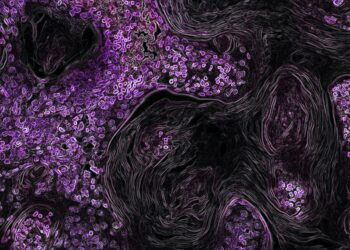Compulsive buying during the holiday season can have significant impacts on individuals’ mental health and financial well-being. According to the Diagnostic and Statistical Manual of Mental Disorders, Fifth Edition (DSM-5), which is the diagnostic manual used by mental health professionals, compulsive buying disorder (CBD) is characterized by an uncontrollable need to shop and spend, leading to distress or impairment.
We review the causes, symptoms, and treatment options for CBD, as well as its association with other psychiatric conditions such as depression.
Whether you or someone you know struggles with compulsive shopping, understanding this disorder can be crucial for finding effective help and support.
Understanding Compulsive Shopping Disorder
Compulsive shopping disorder, also known as compulsive buying disorder (CBD), is a mental health condition that can become particularly challenging during the holiday season. CBD is characterized by an intense and uncontrollable urge to shop and spend money, leading to significant distress or impairment in various aspects of life.
There are several possible causes of CBD, including psychological, emotional, and social factors. Some individuals may use compulsive shopping as a way to alleviate emotional distress or fill a void in their lives. Societal pressures and advertising during the holiday season can further exacerbate the symptoms of this disorder.
Symptoms of CBD can vary from person to person but often include obsessive thoughts about shopping, an inability to resist the urge to buy, and financial difficulties as a result of excessive spending. It is important to note that CBD can co-occur with other mental health conditions such as depression, anxiety, or hoarding disorder.
Treating compulsive shopping disorder typically involves a combination of therapy and medication, depending on the severity of the symptoms. Cognitive-behavioral therapy (CBT) has been found to be particularly effective in helping individuals manage and overcome their compulsive shopping behaviors. Additionally, support groups and self-help strategies can provide valuable tools for individuals dealing with CBD.
Causes and Triggers of Compulsive Shopping Disorder during the Holiday Season
Compulsive shopping disorder can become particularly pronounced during the holiday season due to various causes and triggers. The increased social pressure to give and receive gifts, coupled with the lure of holiday sales and advertisements, can contribute to the development or exacerbation of compulsive shopping behaviors.
One possible cause of compulsive shopping during the holidays is the desire to fulfill societal expectations. Many individuals feel the pressure to buy extravagant gifts and engage in excessive spending in order to meet the perceived standards of the holiday season. This can lead to a cycle of compulsive shopping as an attempt to meet these expectations, regardless of financial limitations or the individual’s true desires.
Another trigger for compulsive shopping during the holidays is the emotional aspect of the season. For some individuals, the holidays can evoke feelings of loneliness, sadness, or nostalgia. Compulsive shopping may serve as a way to temporarily alleviate these emotional states or fill a void in their lives.
The festivities and commercialization of the holiday season can create a sense of urgency and excitement, making it difficult for individuals with compulsive shopping disorder to resist the urge to shop. The constant bombardment of holiday sales, discounts, and limited-time offers can trigger impulsive and excessive spending.
Understanding these symptoms and triggers can help individuals and their loved ones identify and address compulsive shopping behaviors during this time of year and seek appropriate treatment and support.
Identifying Symptoms of Compulsive Shopping Disorder
Recognizing the symptoms of compulsive shopping disorder during the holiday season is crucial in order to seek appropriate help and support.
One of the key symptoms of compulsive shopping disorder is the inability to control or resist the urge to shop. Individuals with this disorder may experience an overwhelming compulsion to make impulsive purchases, often resulting in a sense of guilt or regret afterwards. They may also find themselves preoccupied with thoughts of shopping and may continuously plan, organize, or engage in shopping-related activities.
Financial consequences are another common symptom. Individuals with compulsive shopping disorder may experience significant financial difficulties as a direct result of their excessive spending. Despite mounting debts or financial strain, they may find it difficult to stop or reduce their shopping behaviors.
Compulsive shopping disorder can also have significant social and emotional consequences. Relationships may be strained due to financial disagreements or a lack of understanding surrounding the disorder. Individuals may also experience feelings of shame, guilt, or anxiety related to their shopping behaviors.
Associated Conditions and Co-occurring Disorders
Compulsive shopping disorder is often linked to and can coexist with other mental health conditions. One common associated condition is mood disorders, such as depression or bipolar disorder. The thrill and temporary boost that individuals with compulsive shopping disorder experience from making purchases can temporarily alleviate symptoms of depression or mania. However, this relief is short-lived and can exacerbate the underlying mood disorder.
Another associated condition is substance use disorder. Individuals with compulsive shopping disorder may engage in substance abuse as a way to cope with the feelings of guilt, shame, or anxiety that arise from their excessive spending habits. This co-occurring disorder can further complicate treatment and recovery.
Individuals with compulsive shopping disorder may also struggle with hoarding disorder. Hoarding involves an excessive attachment to possessions and an inability to discard or part with them. The compulsive acquisition of items through shopping can contribute to the clutter and disorganization associated with hoarding.
Treatment Approaches for Compulsive Shopping Disorder according to the DSM-5
Treating compulsive shopping disorder requires a comprehensive approach that addresses both the primary disorder and any associated conditions. According to the DSM-5, there are several effective treatment approaches for individuals with this disorder.
One widely used treatment is cognitive-behavioral therapy (CBT). CBT helps individuals change their thought patterns and behaviors related to shopping, enabling them to develop healthier coping mechanisms and break the cycle of compulsive buying. Through cognitive restructuring and behavioral interventions, individuals can learn to recognize and challenge the distorted thoughts and impulses that drive their excessive spending.
In addition to CBT, medication may be prescribed as part of the treatment plan. Selective serotonin reuptake inhibitors (SSRIs) or other antidepressants can be effective in managing underlying mood disorders and reducing the urge to shop impulsively.
Support groups and self-help programs can also be beneficial. Connecting with others who have similar experiences can provide a sense of community and shared understanding, while also offering practical tips and support for managing compulsive shopping behaviors.
It is important to tailor the treatment approach to each individual’s unique needs and circumstances. A multidisciplinary team, including mental health professionals, financial advisors, and support networks, can provide a holistic approach to treatment and support long-term recovery.
Coping Strategies and Lifestyle Changes to Manage Compulsive Shopping
In addition to professional treatment, there are countless coping strategies and lifestyle changes that individuals with compulsive shopping disorder can adopt to manage their symptoms and regain control over their finances and well-being.
- Budgeting and Financial Planning: Creating a realistic budget and sticking to it can help individuals track their expenses and minimize impulsive spending. It is important to prioritize needs over wants and set aside a specific amount for savings.
- Avoid Triggers and Temptations: Identifying and avoiding situations that trigger the urge to shop excessively can be helpful. This may involve staying away from malls, unsubscribing from retail newsletters, and practicing self-control when browsing online shopping platforms.
- Find Alternative Coping Mechanisms: Engaging in activities and hobbies that provide joy and fulfillment can help redirect the urge to shop compulsively. This can include exercise, spending time with loved ones, or exploring creative outlets like painting or writing.
- Practice Mindfulness: Being present in the moment can help individuals become more aware of their thoughts, feelings, and urges to shop. Practicing mindfulness techniques, such as deep breathing or meditation, can provide a sense of calm and help prevent impulsive buying.
- Seek Social Support: Surrounding oneself with a supportive network of family, friends, or support groups can provide encouragement and accountability during the recovery process. Sharing experiences and learning from others who have successfully overcome compulsive shopping can be empowering.
By implementing these coping strategies and lifestyle changes, individuals can develop healthier habits and manage their compulsive shopping disorder more effectively. It is important to remember that recovery takes time, patience, and dedication. With the right support and tools, it is possible to overcome compulsive shopping and achieve a balanced and fulfilling life.
Preventing Relapse and Maintaining Long-term Recovery
While coping strategies and lifestyle changes can be instrumental in managing compulsive shopping disorder, preventing relapse and maintaining long-term recovery require additional strategies and ongoing vigilance. Here are some key steps to consider:
- Stay vigilant: It is important to remain aware of any warning signs or triggers that may lead to a relapse. Regularly check in with yourself, assess any changes in behavior or thoughts, and take immediate action if you feel the urge to shop excessively.
- Build a support system: Continue to surround yourself with a supportive network of individuals who understand your challenges, provide encouragement, and hold you accountable. Engaging in therapy, joining support groups, or connecting with others through online communities can be beneficial.
- Journaling and self-reflection: Maintain a journal where you can reflect on your progress, identify patterns, and gain deeper insight into your emotions and motivations. Writing down your thoughts and feelings can help you stay connected to your recovery journey.
- Seek professional help: Regularly meet with a therapist or counselor who specializes in compulsive shopping disorder. They can provide ongoing guidance, help you develop effective strategies, and address any underlying issues that may contribute to your compulsive buying behavior.
- Practice self-care: Prioritize self-care practices that promote overall well-being and reduce stress levels. This can include activities such as exercise, getting enough sleep, practicing relaxation techniques, and engaging in hobbies or activities that bring you joy.
By remaining committed to your recovery, you can significantly reduce the risk of relapse and maintain long-term wellness. Remember, recovery is a journey, and setbacks may occur. However, with the right support, tools, and determination, you can overcome compulsive shopping disorder and lead a healthier, more balanced life.
Raising Awareness and Providing Support for Individuals with Compulsive Shopping Disorder
While the holiday season can be a particularly challenging time for individuals with compulsive shopping disorder, it’s important to remember that help and support are available. By shedding light on this often misunderstood condition, we can create a more understanding and compassionate society.
Lastly, providing support for those struggling with compulsive shopping disorder is vital. Offering resources such as helpline numbers, therapy options, and support groups can make a significant difference in someone’s journey to recovery.
Let us come together to support and empower individuals affected by compulsive shopping disorder during the holiday season and beyond. Together, we can make a difference and help individuals find healthier ways to cope with their emotions and lead fulfilling lives.















